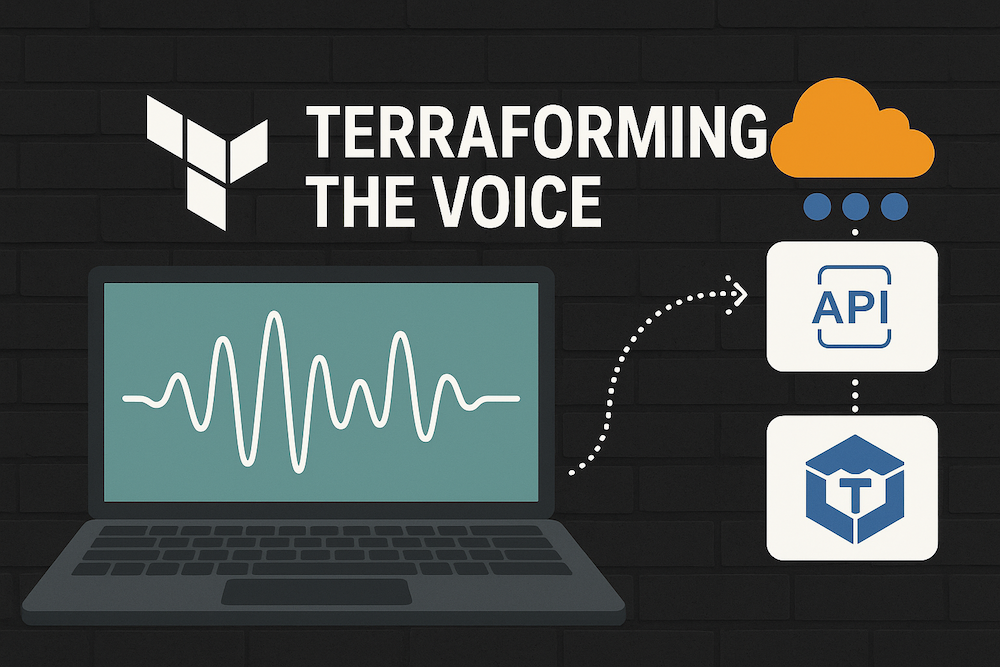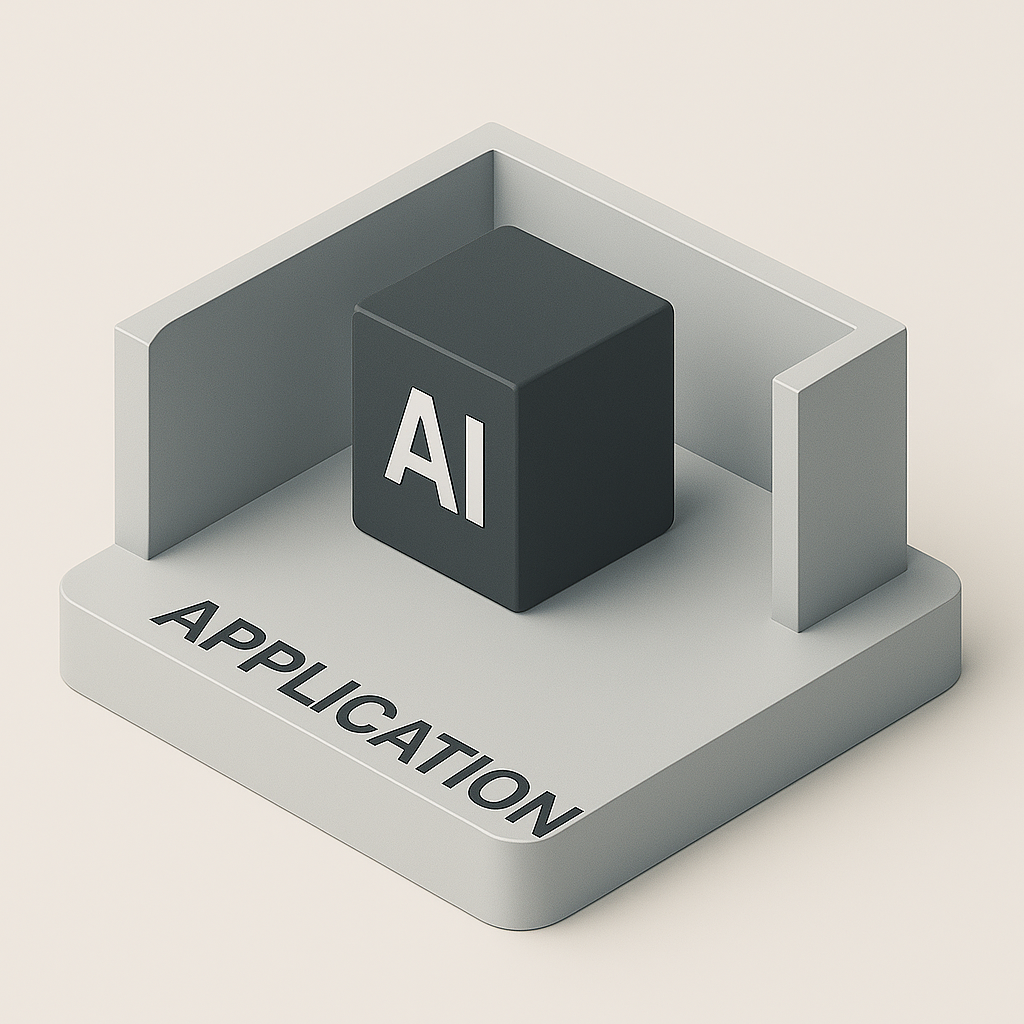
Terraforming the Voice: Deploying a Clone Application with Infrastructure as Code on AWS
By Todd Bernson, CTO of BSC Analytics, Terraform Whisperer
There’s something beautiful about watching an entire production-grade environment spring to life from a single command — like watching a barbell float off the ground when the form is just right. This article is for those of us who believe that if your infrastructure isn’t defined in code, it’s one rogue click away from disaster.
Welcome to the story of how I built and deployed a self-hosted voice cloning application on AWS using Terraform for full-stack automation. We’re not talking about a toy project or an ML demo in a Jupyter notebook — this is a fully containerized, production-ready, auto-scaling, API-driven platform running in the cloud, doing real work. And it’s all defined, versioned, and repeatable, thanks to Terraform.
The Problem with ClickOps
Before we dive into the nuts and bolts, a quick word about ClickOps: don’t. I’ve seen more environments lost to fat-fingered console misclicks than leg days I've skipped. If your architecture lives in a dashboard, you don’t have architecture — you have a house of cards, built by a caffeinated intern and a bunch of undocumented AWS services.
Enter Terraform: HashiCorp’s solution for engineers who believe in immutability, repeatability, and not doing the same thing twice.
Project Overview: Voice Cloning Platform
We’re deploying a voice cloning system that includes:
- A static frontend hosted on Amazon S3 with CloudFront
- A backend API layer using API Gateway, Lambda, and/or EKS
- ML inference containers running voice models like Tortoise-TTS
- Audio files and output stored in S3
- Monitoring via CloudWatch
- IAM roles for secure, scoped access
All of it defined, provisioned, and version-controlled in Terraform. No clicks required.
Terraform Module Breakdown
The project is broken into modules. Because monolith Terraform files are like mixing all your protein powders in one shaker — technically it works, but you’ll regret it later.
1. s3-static-site
This module provisions:
- An S3 bucket for static frontend files
- CloudFront distribution with proper caching behavior
- OAI (Origin Access Identity) to restrict direct S3 access
- Route53 records if needed for custom domain
2. api-layer
Depending on the job type, this module provisions:
- API Gateway (REST or HTTP)
- Lambda functions (for authorization)
All versions are tracked. All permissions scoped. All endpoints logged.
3. voice-model-inference
- EKS using the Tortoise-TTS container from ECR
- IAM roles allowing secure access to model artifacts in S3
- Logging via CloudWatch
- GPU instances if you’re running inferencing at scale
4. monitoring
Because observability is not optional:
- CloudWatch dashboards
- Log groups with retention policies
- Alarms on task failures, API errors, and latency thresholds
5. iam-baseline
- Scoped policies for Lambda and EKS
- Roles for CloudFront, S3 access, and API Gateway execution
- No
*permissions. Ever.
Deploy Flow
Your deploy process should be as crisp as a fresh uniform. Here’s how mine runs:
- Clone repo
- Set env-specific
terraform.tfvars - Run
terraform init - Run
terraform plan -out=plan.out - Run
terraform apply plan.out - Grab coffee, watch CloudWatch logs roll in
Each environment (dev, staging, prod) uses workspaces and backend state isolation. You can redeploy the entire stack quickly — assuming us-east-1 isn’t having “a moment.”
Secrets and Configs
Secrets are stored in AWS Secrets Manager, injected into Lambda and EKS tasks via environment variables.
If your config lives in config.js, you might as well tattoo your AWS keys on your forehead.
Real-World Lessons
- S3 Bucket Policies: Don’t let CloudFront cache a 403 error. Test permissions before deploy.
- Terraform State Locking: Use DynamoDB for backend locking or suffer the wrath of simultaneous
applyattempts. Terraform now supports state locking in S3. - Cost Tags: Tag everything. Billing reports should not require detective work.
Dev Experience
Everything’s hooked into GitHub Actions:
- Lint Terraform
- Run
terraform planand post diff to PR - Auto-apply on merge to
main(with approval gates)
Because manual deploys are for the birds. Or for vendors who bill hourly.
Why This Matters
Voice cloning isn’t just a novelty. In finance, healthcare, and insurance, it can revolutionize how humans interact with systems. But to be enterprise-ready, it needs:
- Secure deployment
- Scalable architecture
- Auditability
- Repeatability
This Terraform foundation ensures all four. Whether you’re standing up 1 environment or 100, the experience is the same. And when something breaks (it will), you’ll know exactly where to look — not which region your intern forgot to tag.
Final Thoughts
Building this platform felt like prepping for a lifting competition. The planning mattered as much as the execution, and when everything locked into place — it just felt solid.
Use Terraform. Use modules. Lock your state. And never let IAM policies become a "temporary fix."
Semper Fi, and happy provisioning.



